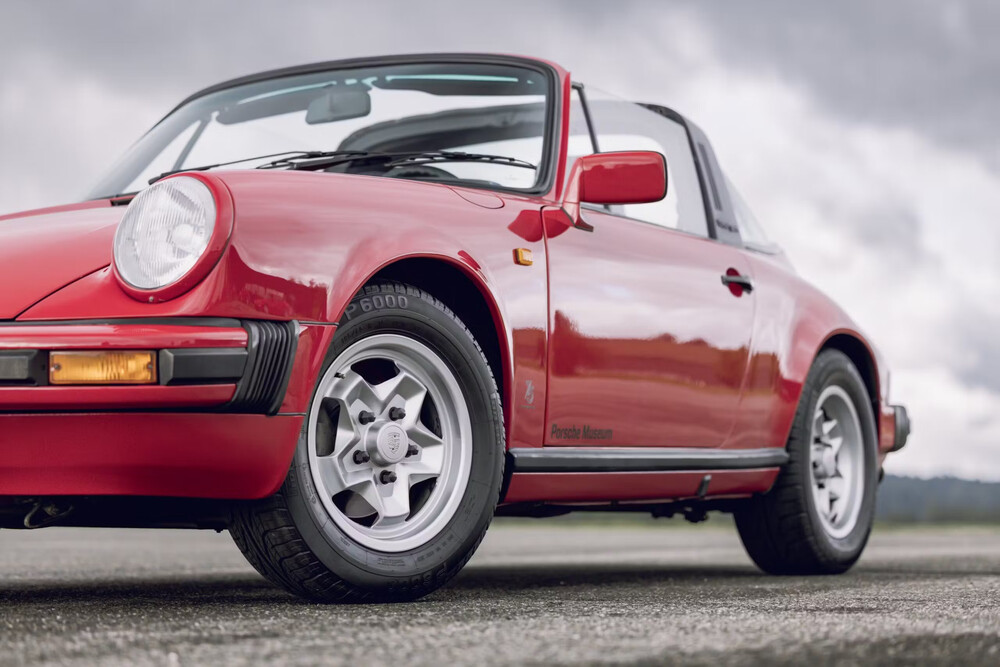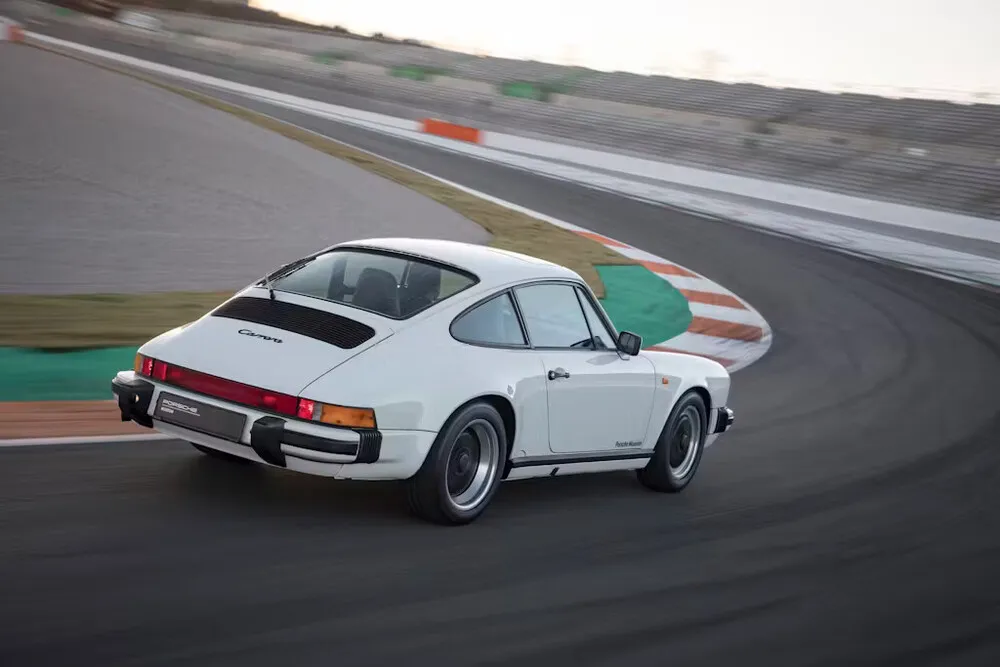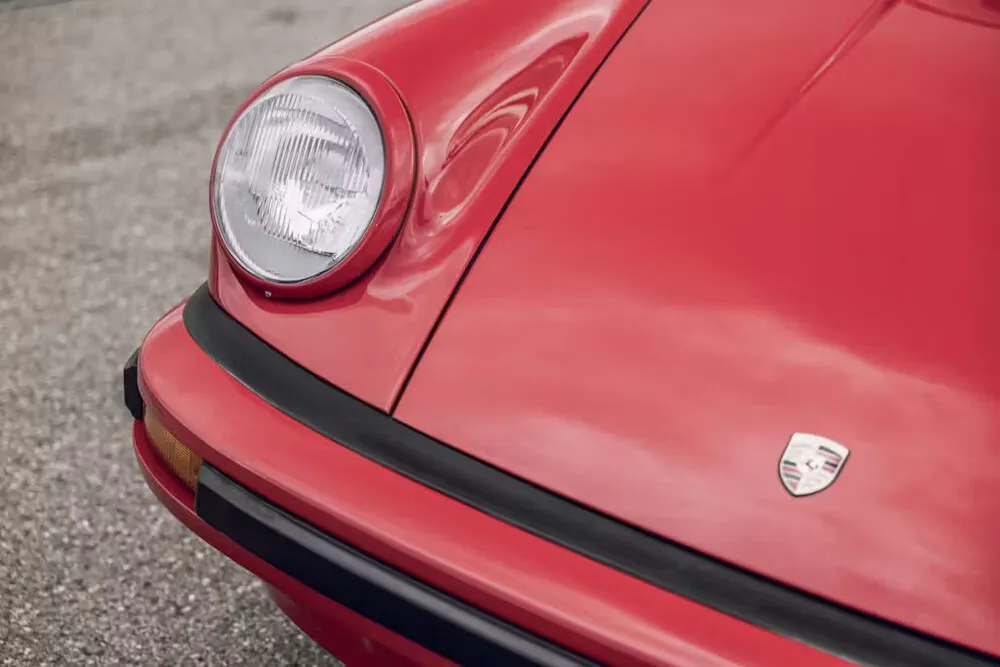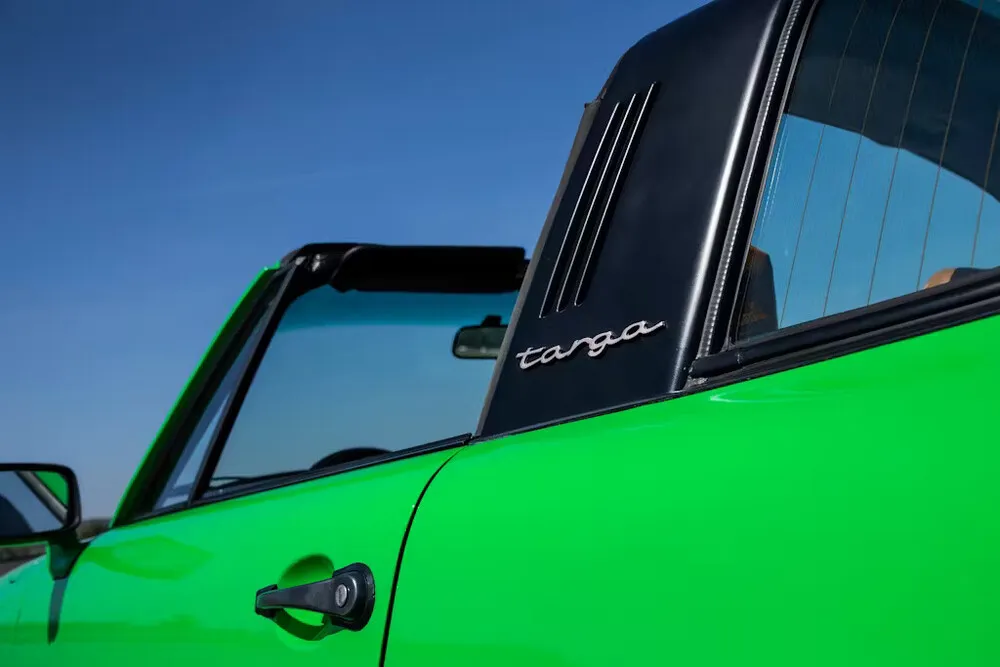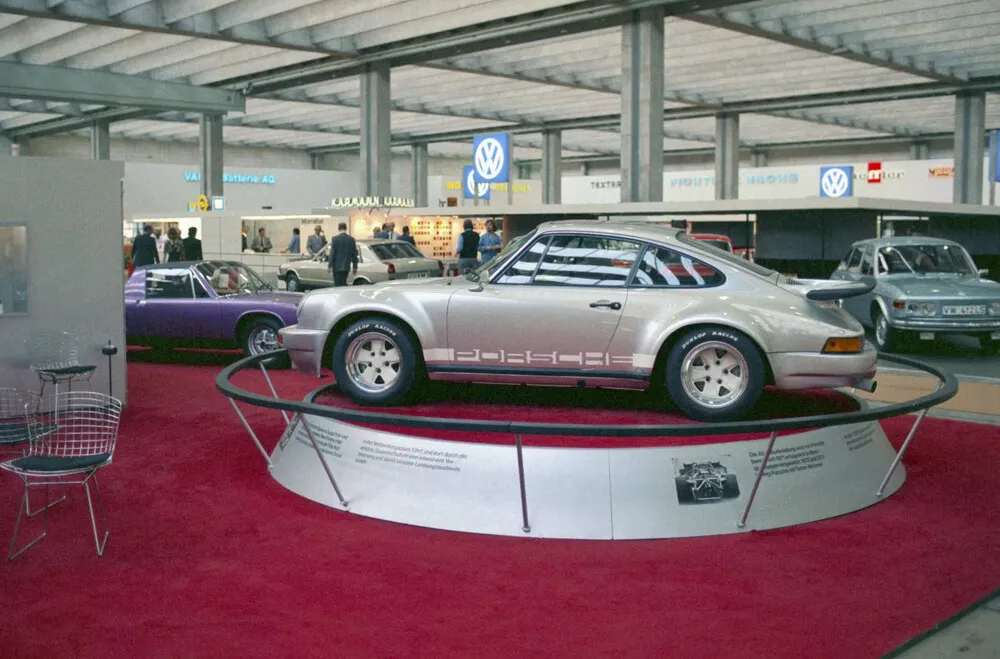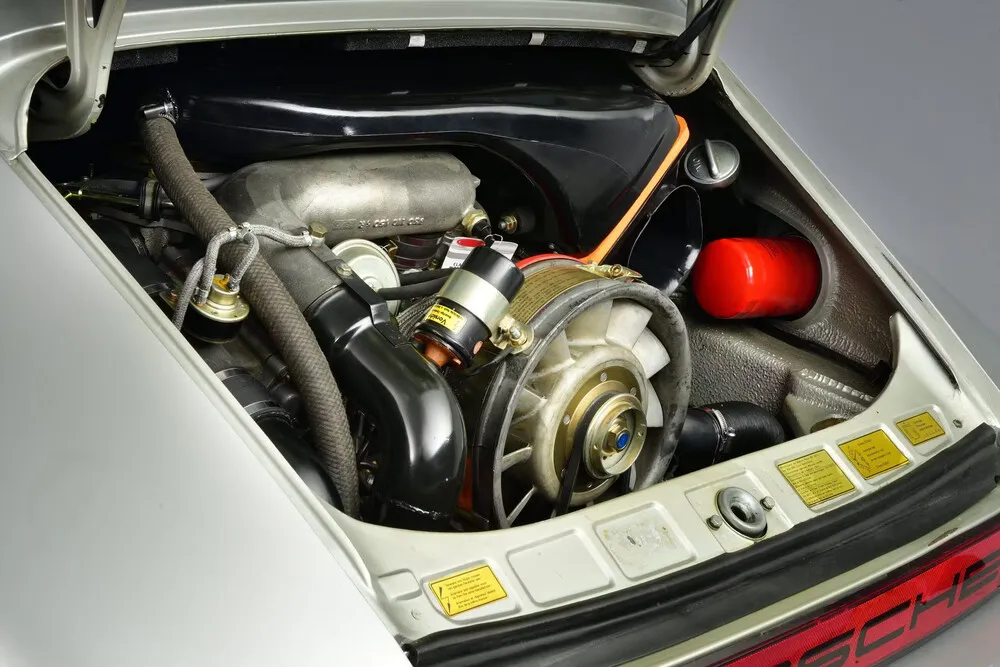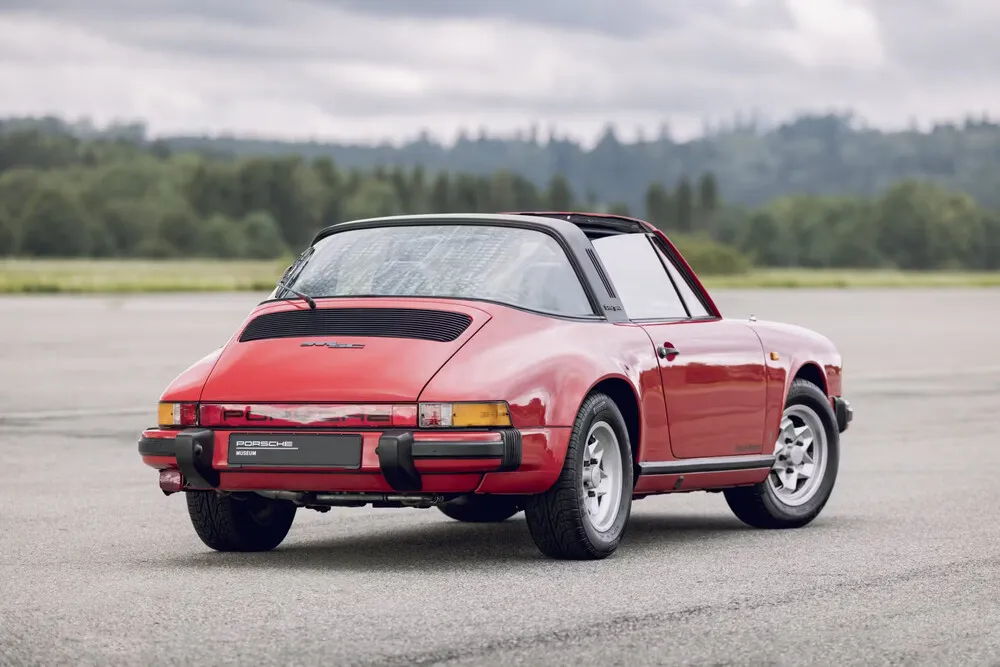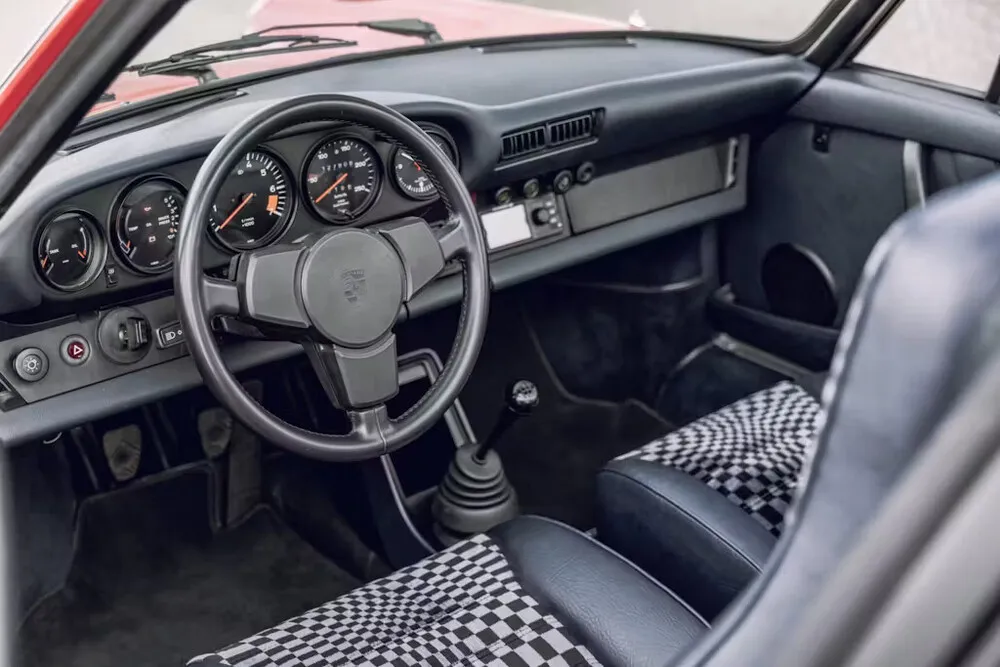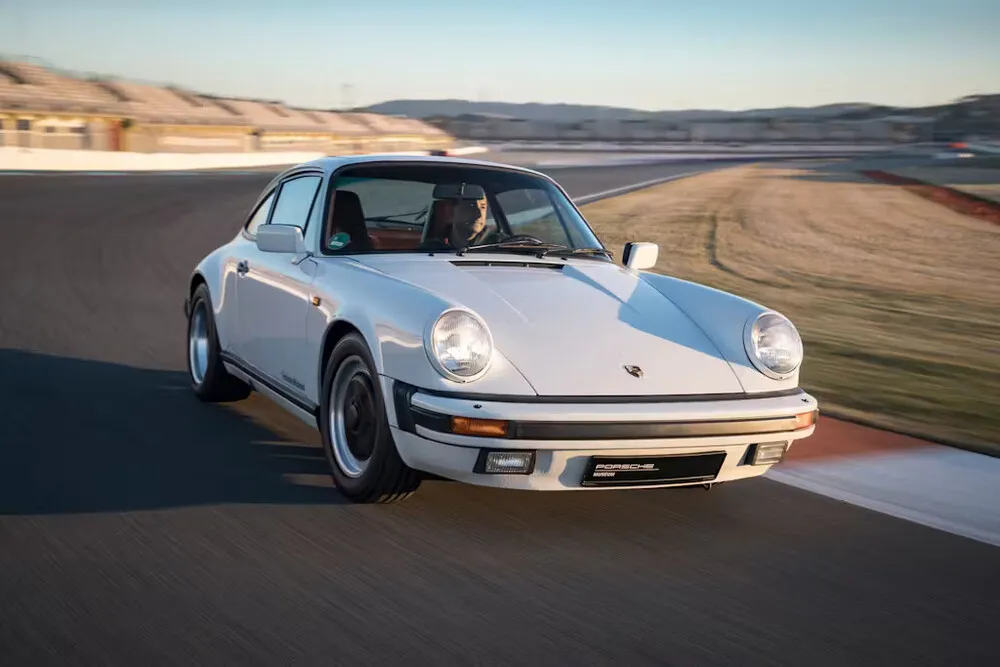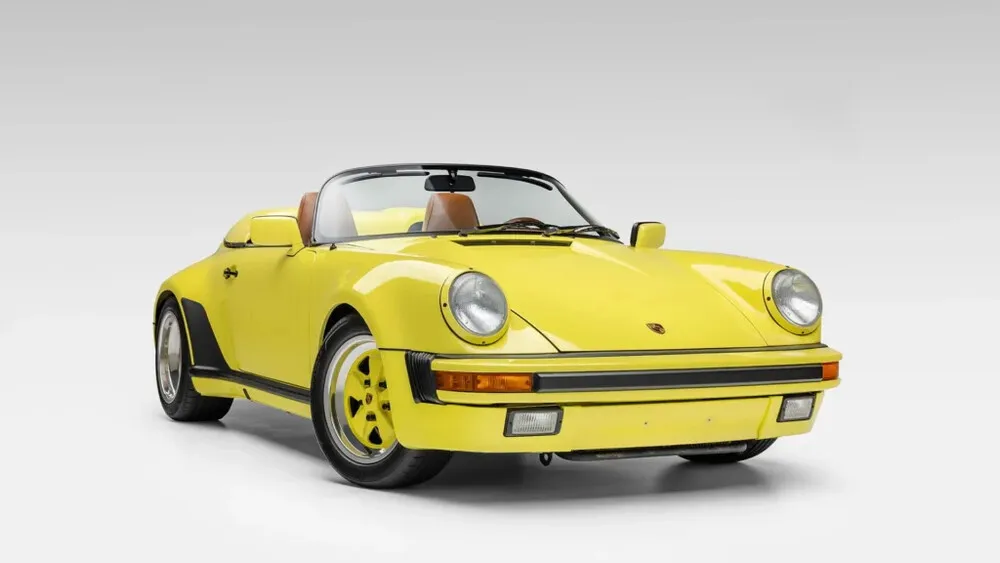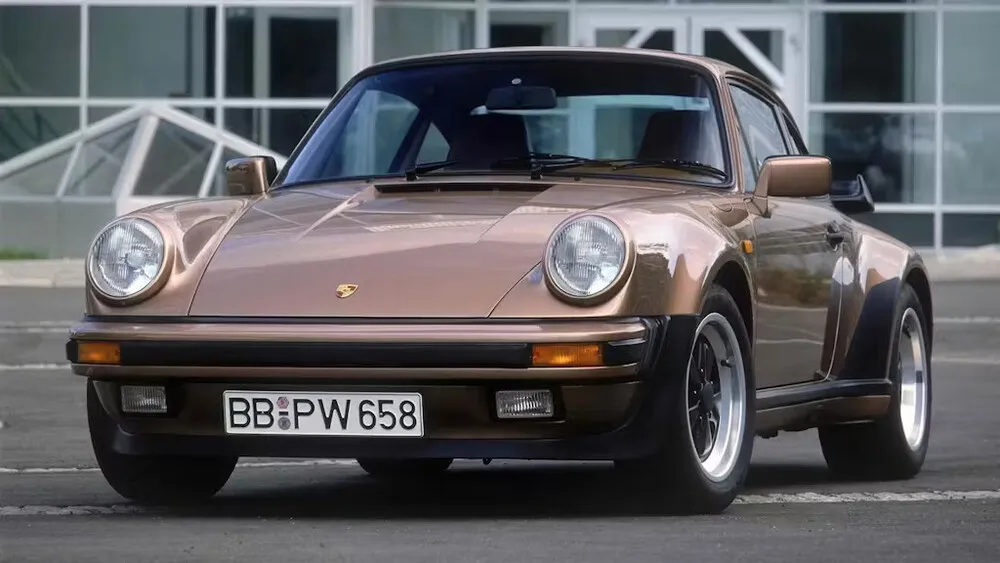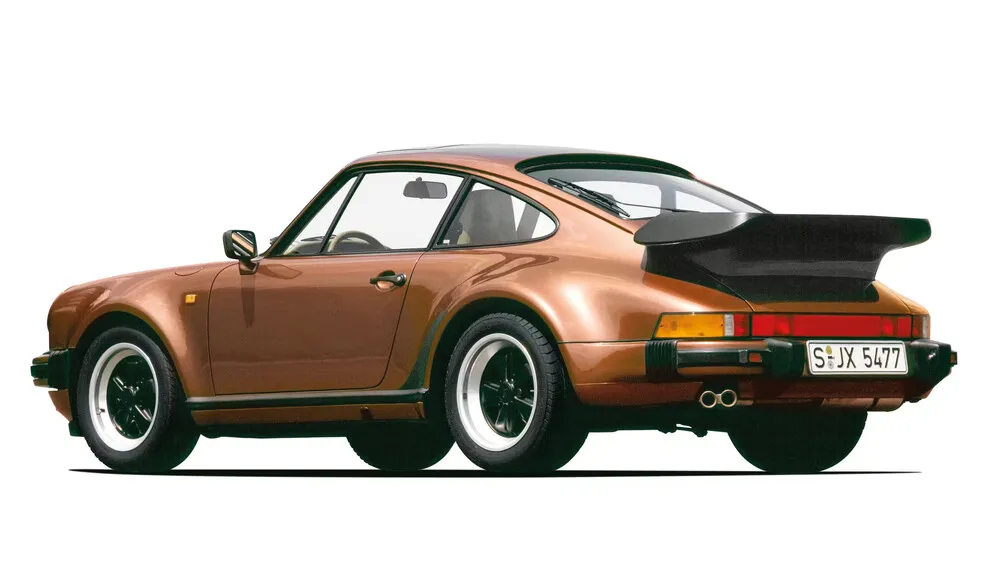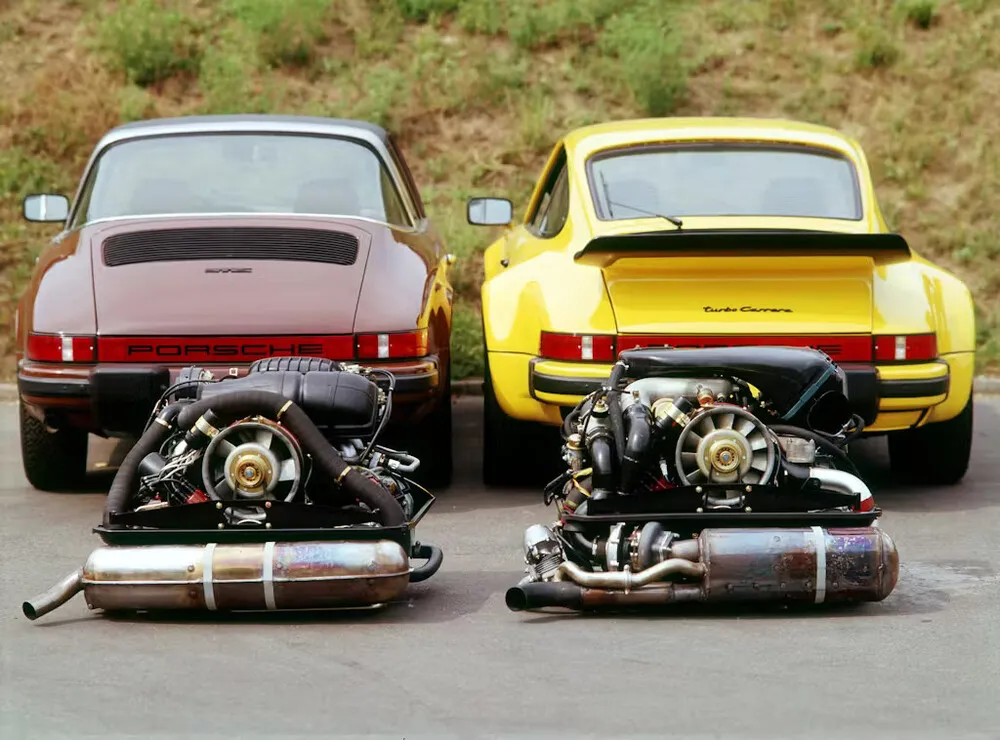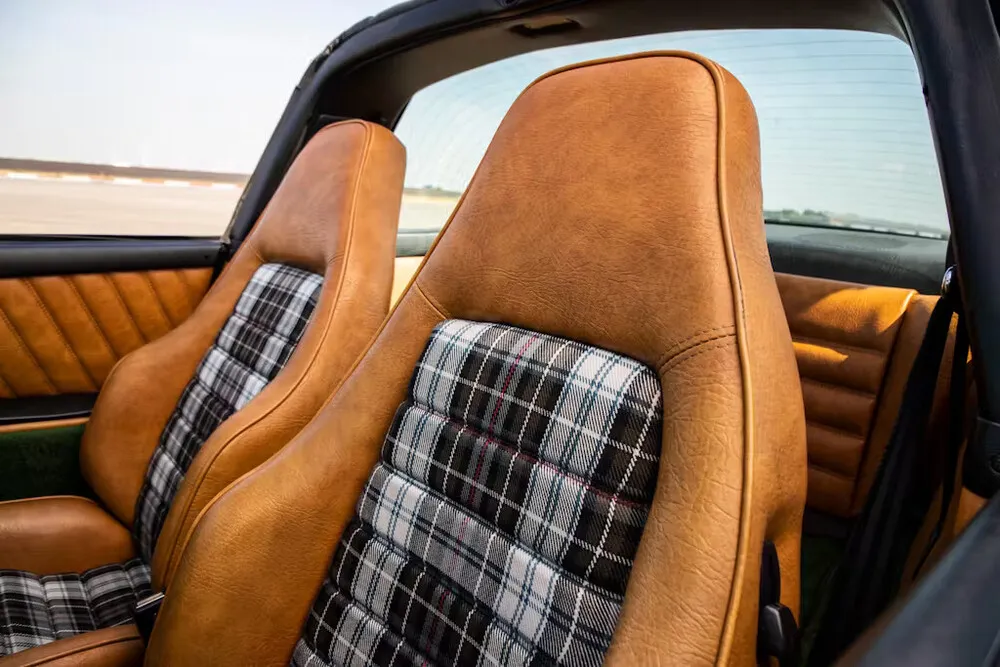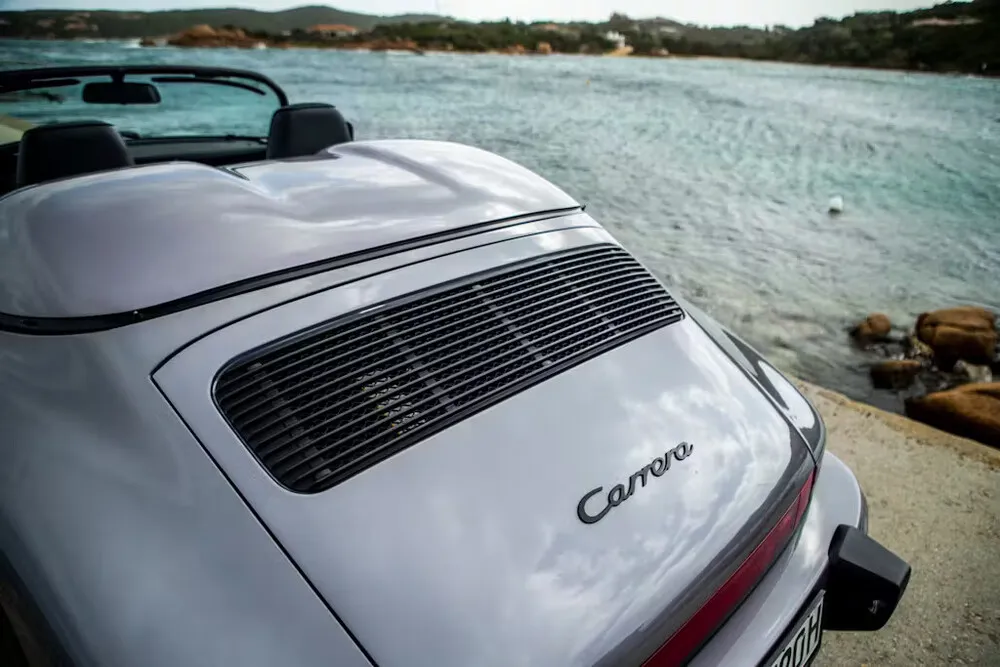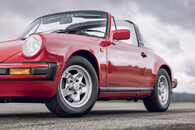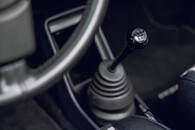Your Handy 1974–1989 Porsche 911 (G-Series) Buyers Guide
Description: |
|
| Author: Andrew Ganz Source: Hagerty Media — Hagerty Insider By the early 1980s, the Porsche 911 should have been old news. Even by admittedly long product cycles for contemporary European automakers, the car that replaced the Porsche 356 was due for a redesign. That, of course, did not really happen until the 1999 model year in the U.S., a full quarter-century after the so-called G-Series 911s arrived. The G-Series name followed, naturally, in the tire tracks of the relatively consistent A through F-Series models (though, confusingly, the first 911s eventually became known as O-Series cars, but that’s a story for another day). Technically, the Porsche alphabet continued for many years, but even hardened enthusiasts are fine with calling these 1974 through 1989 models the “G-Series” or “G-Body.” These were the cars that carried Porsche from the impact-bumper 1970s into the digital 1980s, and they became icons in their own time as well-heeled buyers in what became Porsche’s biggest market—the United States—flocked to the brand in that booming decade. Here, we’ll take a look at the G-Series from a high level to help you narrow down just what G-Series 911 may work best for your needs. Generally, we’ve focused this guide on more common models; the 911 Turbo, for instance, is different enough to demand its own guide. We’ve also looked specifically at American-market cars, though many gray-market cars made their way here in the 1980s as a result of a weak German currency. Even the last of the so-called Rest of World (RoW) G-Series cars have now been eligible for importation to the U.S. for a decade, so the floodgates have been open for quite some time. RoW models can differ considerably both mechanically and cosmetically from their U.S. counterparts. Confusingly, Japanese-market models—typically configured with left-hand drive—sometimes blend RoW and U.S.-market parts. And, one last but major caveat: As with just about any old car, just because a 911 left Stuttgart with a particular engine, fuel injection, and gearbox setup doesn’t mean it retains that configuration today. The U.S. Market Demands Change, Like It Or Not By 1970, changes were afoot at Porsche. Around half of all 911s were earmarked for buyers in the U.S., so the company was keen to adapt to changes on our automotive horizon. (Incidentally, we’re still Porsche’s biggest market, but we now account for around a quarter of all Porsche sales.) It started with the 1965 Motor Vehicle Air Pollution Control Act, which aimed to cut tailpipe emissions drastically. Almost concurrently, the federal government also began to regulate vehicle safety like never before, which, along with insurance industry concerns over low-speed damage repair costs, spelled an end to delicate chrome bumpers. Porsche, like all European brands, had to scramble. Cars designated for the 1974 model year discarded tried-and-true chrome in favor of relatively well-integrated bumpers with color-matched housings, black rub strips, and accordion-esque bellows designed to crush inward before bending expensive sheet metal if they bonked a wall at a very low speed. In comparison to other German efforts—cough, Mercedes-Benz, cough—Porsche’s approach was rather attractive indeed. Body-wise, the earliest cars retained the narrow rear fenders of their predecessors, giving them a somewhat simple look in contrast to flared fenders that came later. Just why the 911’s new impact bumpers lasted into 1989 has been the subject of many a Cars and Coffee debate; the real answer is two-fold. Porsche’s tenuous financial situation made it difficult to justify the cost of fully redesigning the 911, and, anyway, the company had intended to replace it with the front-engine 928. But we all know how that went. The G-Series can be broken down into three distinct generations, which you’ll find below. 1974-1977: The Experimental Era With the bumper issue mostly solved in 1974, Porsche found itself having to make numerous mechanical tweaks to keep its 911 emissions-compliant in the U.S. Thus, the earliest G-Series models saw myriad revisions each year. The impact bumpers were the most visible marker of the G-Series, but there were many other changes. The late-1973 introduction of Bosch’s K-Jetronic CIS fuel-injection system carried into 1974, where it was bolted onto a detuned version of the prior year’s performance-oriented 2.7-liter flat-six. But don’t get too excited. Base 911 models put out a modest 143 hp, while the 911 S and 911 Carrera had another 24 ponies. With manufacturer-quoted zero-to-60-mph times ranging from 8.5 to 7.6 seconds, these cars were fairly quick for their emissions-strangled era but a bit pokey compared to a few years prior. Still, they looked the part in any form. Coupe and Targa models were available, the latter retaining a stainless hoop and a big fixed glass window from earlier 911s. Base cars had 15-inch steel wheels with dog dish hubcaps, while the 911 S swapped in alloy wheels. The top-dog Carrera had a ducktail spoiler, blacked-out window trim rather than chrome, side graphics, and staggered Fuchs wheels. The base 911 went away for 1975, as did 10 hp due to various emissions equipment additions like an air injection pump, a thermal reactor, and lower engine compression. This year, the 911 S and 911 Carrera were both rated at 157 hp. Notably, California buyers had five fewer ponies. There was more dramatic news for 1976 when the 912 E nameplate was introduced as an economy-oriented model designed to bridge the gap between the 914 and the upcoming 924. Its Bosch L-Jetronic fuel-injected 2.0-liter flat-four wheezed out a measly 86 hp, slowing it to just 11.3 seconds to 60, according to a December 1975 test by Car and Driver. As if to cancel that model out, Porsche finally gave U.S.-market buyers the chance to acquire its 911 Turbo, known internally as the 930. This vastly different car used a 3.0-liter flat-six paired with Bosch CIS injection and, as its name implies, a whopper of a turbocharger. Porsche wasn’t first with a turbo, but it was undoubtedly the most aggressive mainstream implementer to date; the 911 Turbo tugged its way to 60 mph in just 4.9 seconds according to the Car and Driver test (most others peg the number in the mid-five-second range). Accompanying the Turbo was a gigantic fixed rear wing and the broad rear haunches that mark the 911 to this day. The 911 S gained new head studs and a magnesium case intended to rectify some of the heat-related issues caused by the emissions equipment additions in 1975 (this did not entirely alleviate a head-stud failure issue, however). In what was becoming something of a trend, Porsche once again dropped its base model for 1977. The cars had numerous minor tweaks but no major changes. 1978-1983: The Super Carrera Era Porsche didn’t reinvent the 911 for 1978, but its changes were big enough to dictate a new name: 911 SC, or Super Carrera. The 2.7-liter flat-six was discarded in favor of a Turbo-inspired 3.0-liter engine called the 930/03 in U.S. form. Improvements to the Bosch fuel-injection system helped squeeze out 180 hp, but that was just the beginning of the improvements. The new engine had a stronger aluminum crankcase, vastly better oil cooling, and a more efficient emissions system, plus changes to its timing that resulted in substantial low-end torque. All of this was great news for Americans, though standardization efforts meant that the engine was a downgrade for RoW cars. All 911s now came with a widened rear stance for better grip, plus staggered 15-inch Fuchs wheels. The galvanized body was less susceptible to rust than earlier cars that had a less sophisticated galvanizing process, while an upgraded air conditioning system made the 911 more livable. A new brake servo improved stopping power, and the anti-roll bars were upsized for flatter cornering. Curiously, Porsche pumped a lot of effort into modernizing the 911 while simultaneously promoting its new, costly 928 as its flagship. Over the course of the SC era, the 911 gained a lot of standard features like power windows, air conditioning, and a decent audio system, which further narrowed the gap with the 928. New Bosch K-Jetronic fuel injection bolted to the 3.0-liter six-cylinder upped power figures to north of 200 by 1981. Stronger 911 sales and a new American CEO prompted Porsche to invest heavily in its aging sports car, resulting in the 911 SC Cabriolet unveiled at the 1982 Frankfurt Motor Show. At around $35,000 when new, the 911 SC Cabriolet was a true rich person’s plaything. It was an instant hit, and Porsche made nearly as many droptops for 1983 as it did fixed-roof models. Notably, Porsche began affixing option code stickers under the cars’ front hoods and inside their owners’ manuals in 1983. These distinct white stickers are easy to decode, and they contain information like interior and exterior color codes as well as any factory-fitted optional equipment. 1984-1989: The 3.2 Era The G-Series reached its zenith in 1984, when a new 3.2-liter flat-six arrived with a small power increase to 207 hp courtesy of the Turbo’s crankshaft and a sophisticated Bosch L-Jetronic fuel-injection system with the German firm’s Motronic engine management system. The new engine provided for far quicker acceleration to 60 mph, and to help whoa things down, the cars came with a thoroughly revised brake system. The 3.2-powered cars looked mostly like their predecessors, albeit with better-integrated fog lights sitting below their impact bumpers. Additionally, buyers could now select the Supersport, or “Turbo-Look” package (also known as the M491 package) that added wider rear arches and a Turbo-style fixed rear spoiler, along with Turbo-spec brakes, suspension, and tires. This package, available in 1984 on the Coupe only, would become an option on 1985 Targas and Cabriolets as well. The Turbo-look and the Cabriolet demonstrated Porsche’s awareness that its American customers appreciated variety, and the two were early steps toward the massive amount of variety and personalization available from the brand today. For 1986, Porsche revised the dashboard and climate control system, and fitted larger anti-roll bars and rear torsion bars to improve handling. These late G-Series cars were the heaviest and plushest 911s to date, though with unassisted steering and a torsion-bar suspension, they are nonetheless raw driver’s cars. The most notable change of the 3.2 era came in 1987, when the pre-G-Series Porsche 915 transmission was replaced with the new Getrag G50, which featured hydraulic clutch activation rather than a mechanical setup. The new transmission was far more precise, and it paired well with the 3.2, which got a 10-hp bump (to 217) since the Bosch systems were modified for the now-common premium unleaded fuel. The G-Series only saw minor revisions for its final two model years, and 1989 brought with it the first iteration of the next 911: The 964, in the form of the all-wheel drive Carrera 4. The G-Series ’89 models included the usual coupe, Cabriolet, Targa, and the 930 Turbo, but also the Cabriolet-based 911 Speedster. Taking cues from a 1987 concept, which itself drew from the 356 Speedster, the G-Series 911 Speedster was defined by a 3.1-inch lower windscreen and a large tonneau cover that covered the space where the rear seats used to be. Although available as a narrow-body car, buyers preferred Turbo-Look Speedsters, and these cars are incredibly sought-after today. The Speedster was a fitting send-off for the G-Series, as the rest of the 964 lineup rolled out in 1990. Which G-Series Is Right For You? Your budget will likely help you narrow down which G-Series era is best for you. As with any vintage car, you should look for the best one you can afford while also budgeting for down-the-road costs. While these were well-built cars, they are now old, and they are not inexpensive to maintain. Parts are widely available, but many come directly from Porsche. Suffice to say that Porsche is not in the business of offering cheap parts, and even though good aftermarket suppliers are usually more affordable, there’s a reason for the phrase, “Porsche tax.” As with any Porsche, condition and rarity matter the most, followed closely by the provenance of a long paper trail of receipts. Broadly speaking, the Carrera 3.2 models are generally worth more than SCs, which are in turn worth more than 2.7-liter cars. However, this is hardly an exact bell curve. For instance, the earliest impact bumper cars have a certain purity and simplicity that kicks up their value. (The fact that 1974 models don’t need to be emissions tested in places like California helps out considerably.) Regardless of its equipment, all G-Series 911s have been on an upward trajectory that shows no signs of an abrupt halt. Gray-market cars are usually worth a bit less than U.S. cars, though here, too, unusual color combinations that were more common outside the U.S. may boost a specific car’s value. Cabriolets can be a great way into G-Series 911 ownership as they generally command considerably lower values than coupes, though few convertible buyers want a hardtop and vice versa. Targa values are a contentious subject; they’re usually worth a little less than coupes. Sunroofs, on the other hand, usually add value—though here, too, some buyers want nothing to do with a roof that opens and will pay more for a slicktop. No matter the G-Series, it’s almost always possible to find an exceptional example of each model year with a six-figure price tag. But don’t let these show-grade cars dissuade you; bargains are still out there. An early 911 2.7 in #2 (excellent) condition is worth $72,000, according to Hagerty’s Valuation Tools; an emissions-strangled 1977 911 S drops down to $58,000. The 1976-only 912 E, of which only about 2000 were made, slides in at $62,000 in #2 condition. Its four-cylinder power kept it cheap for years, and many received engine transplants along the way. Budget closer to $85,000 for an SC hardtop in #2 condition. A pre-G50 911 Carrera 3.2 coupe will run you around $79,000 in #2 condition; a car with the desirable and easier-to-operate G50 gearbox can add $10,000 or more. And then there are 911 Turbos, which command upward of $150,000; pair a turbocharged engine with the rare slantnose option and you’ll be living the peak ‘80s lifestyle for nearly $300,000. By now, many G-Series cars have been modified. You’ll find a lot of cars that have been updated to look like a 964 or a 993, as well as those that have been backdated with composite RS-style bumpers. Unless done to a very high standard, these cars usually command less than one that retains its impact bumpers. What to Look For in a G-Series 911 These are fairly robust Porsche models, and many have been well cared for over the past few decades. That said, even a very nice G-Series car begs for a thorough pre-purchase inspection from a marque specialist. The 1976 911 Turbo Carrera (right) shown with a 911 S Targa (left). The single turbo and its installation configuration are clearly visible in comparison with the naturally aspirated engine. The Turbo’s wide-body fender flares and rear wing made a high-performance visual statement. By now, many of these cars have had their engines or transmissions replaced; if originality is important, look closely at the serial numbers stamped on these items. A well-kept car may have a Porsche Certificate of Authenticity that serves as verification of the car’s equipment when it originally left the factory. Porsche did away with this nifty piece of paper a few years back; today, it offers a costlier but far more detailed Technical Certificate that can only be obtained via a thorough inspection by one of the automaker’s 18 Classic Centers. Otherwise, look carefully for rust, especially on earlier models that lacked the extensive galvanizing treatment of later cars. Pull back the carpet in the luggage compartment and look down low where the spare tire and battery live. You may also be able to spot crumpled sheetmetal indicating a repaired accident. Rust can also form due to clogged sunroof drains and around the windshield. Inside, these 911s hold up pretty well. Dashboard cracks are common, and the leather and vinyl trim fitted to most cars will likely show a lot of wear by now. Many replacement pieces are available direct from Porsche—at a cost, of course. A rat’s nest of wiring under the dash or in the front trunk is an automatic red flag in any car; it’s especially troublesome in a 911, where electrical parts can be quite expensive to repair or replace. The VDO dials that span much of the driver’s vantage point can also fail; they’re a costly fix. Without a detailed paper trail, you may want to consider the odometer’s reading to be “true mileage unknown,” or TMU. A 1981-or-newer U.S.-specification car will have a 17-digit VIN, which means you can get a Carfax or AutoCheck report. Beware that a report on any car this old is likely to reveal limited information until the 21st century, however—once again, odds are good that the odometer does not display accurate mileage. All that said, mileage isn’t an issue for a 911 you plan to drive. While ultra-low-mile cars command big money, they are mostly museum pieces at this point. Air-cooled cars beg to be driven; they do not enjoy sitting for extended periods. Any 911 of this era is likely to leak oil; these cars have lots of seals and hoses. Here, a specialist can provide a good opinion on the source(s) of leaks as well as the importance and cost of rectifying them. The 2.7-liter engines were known for weak head studs—this was addressed from the SC forward. Generally, the 3.0- and 3.2-liter engines are considered very stout, but a thorough pre-purchase inspection is a smart way to ensure you won’t be dropping another five figures on an engine rebuild down the road. Both the 915 and the especially later G50 transmissions hold up well to abuse. The 915’s lack of a spring to center the gearbox and its unusual synchromesh, intended to facilitate fast shifting, require a learning curve. This complicated gearbox absolutely needs an experienced mechanic to repair. Still, a G-Series 911 doesn’t need to be owned by a marque expert. In many ways, these are approachable cars for at-home mechanics, and the network of resources and parts is vast. If you’re looking for a quintessentially Porsche experience filled with ’70s-80s character, the G-Series is worth a look. Photo Credits: Hagerty, Porsche and Broad Arrow Original publication date: October 29, 2025 Original URL: www.hagerty.com/media/market-trends/hagerty-insider/your-handy-1974-1989-porsche-911-g-series-buyers-guide/ |
|
Members profile: |
|
| Advertised by: | The Best Articles and Stories (click here to see full profile) |
| Email: | Email Advertiser |
Ad Details |
|
| Garage Spaces (put 0 if this does not apply) | 0.00 |
| Price: | $0 USD |
Website |
|
| Website | https://www.hagerty.com/media/market-trends/hagerty-insider/your-ha... |
| Ad id: | 70955135 |
| Views: | 175 |

